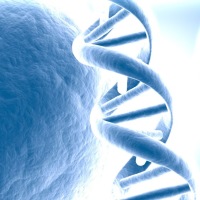Technology has been expressing itself through different dimensions, which is why everything is moving towards a digital wireframe. Like other industries, healthcare and medical has seen a lot of innovation after integration of technology. There is a general move towards digitalization of healthcare in order to enhance productivity.
Another benefit of technology is its ability to miniaturize the working model, and that can be seen in nanotechnology. Nanotechnology has far reaching applications such as manufacturing sensors in smartphones to allow drug delivery in pharmaceutical sector.

The industry is now heavily relying on online databases and records, which is not easy to keep track of. This is why healthcare contract management systems have made way both online and offline in order to improve the functionality.
New innovations in the healthcare sector are generated from the IT sector. Take sequencing of DNA for that matter, which has massively increased the database in biological sciences.
Nanotechnology allows integration of multiple domains into one. The basic principle behind nanoparticle is that it uses very minute particles of the size 10-6m and this allows the researchers to pass them through the cells accordingly.
Since the passage through cells is easy, it’s possible to attach different molecules of interest. Now taking Parkinson’s disease into consideration, it’s kind of a neurodegenerative disease in which the nerves cells are degraded over time. The possibility of giving medicine is reduced on the account that the drug can’t pass the blood-brain barrier. The brain is protected by a three layered protection which makes it difficult to develop a targeted therapy.
However, the nanoparticles are very small and can pass the blood-brain barrier. In this way, the designed drug can reach the nerve cells and inhibit the degenerative activity. New tools are also being developed to study this particular disease.
Another interesting application of nanotech is for cancer therapy. As mentioned earlier, molecules can be attached to the nanoparticles. In the case of cancer cells, researchers have been able to define different markers. These markers allow researchers to differentiate between normal cells and cancer cells. So, in the nanoparticle based cancer therapy, the marker along with the killing molecule is labeled on to the nanoparticle. The nanoparticle would selectively enter the cancer cell and kill it.
Nanoparticles also make wonderful detection systems. A major area in the healthcare domain is that of screening and early detection. A number of cancers, if detected early, can be treated without fatality. Using nanoparticles, nanopores are made. These are membranes which are connected to electrodes. Blood is passed through these nanopores. If the cancer cell is present in the blood, the circuit is disrupted and noise is obtained on the detector. In this way, doctors can detect cancer in small quantities without having to perform biopsies.
Nanoparticles are also important tools as imaging techniques. X-rays and other radiography techniques are fine as well, but they have harmful effects. The nanoparticles can be used to make quantum dots which show different colors when passing in the blood. So in this way, tumors can be detected based upon the color and the location of the dots.
A similar process is used in bio-sensors which can be used to detect environmental pollution or other indicators related to green technology applications.
The overall view of nanotechnology shows that the healthcare is being transformed by leaps and bounds. However, there’s still a need for science to be commercially friendly. The lab experiments have been quite positive, and now a number of industries are pushing nanoparticles based therapies in the market.
